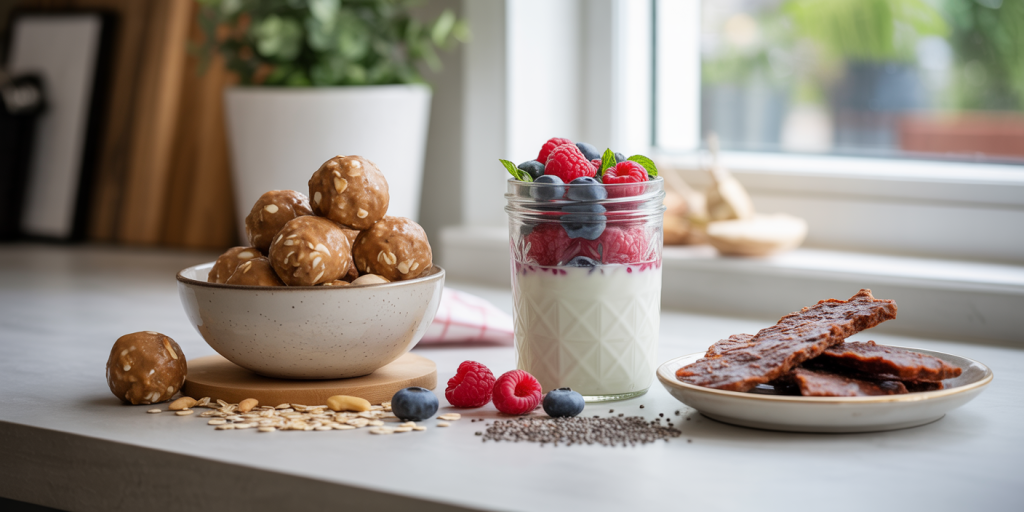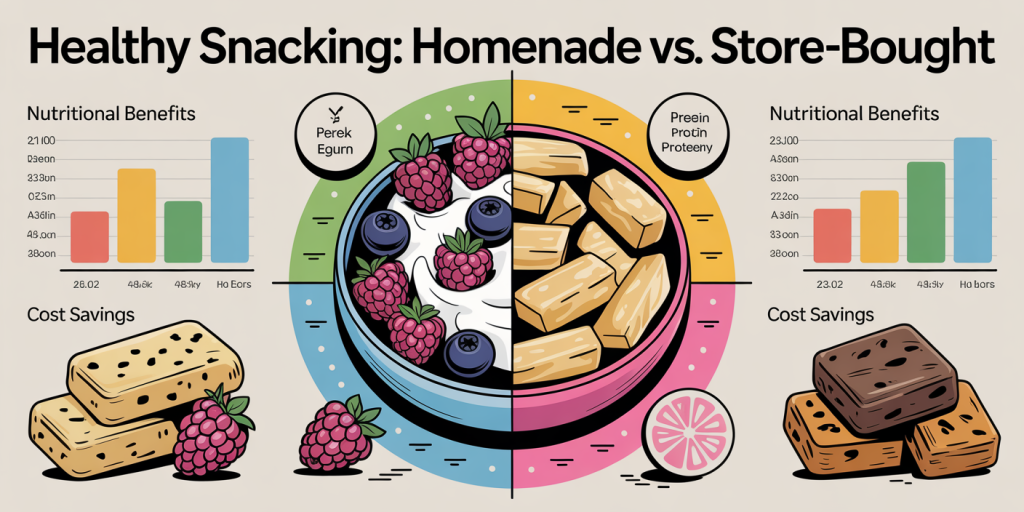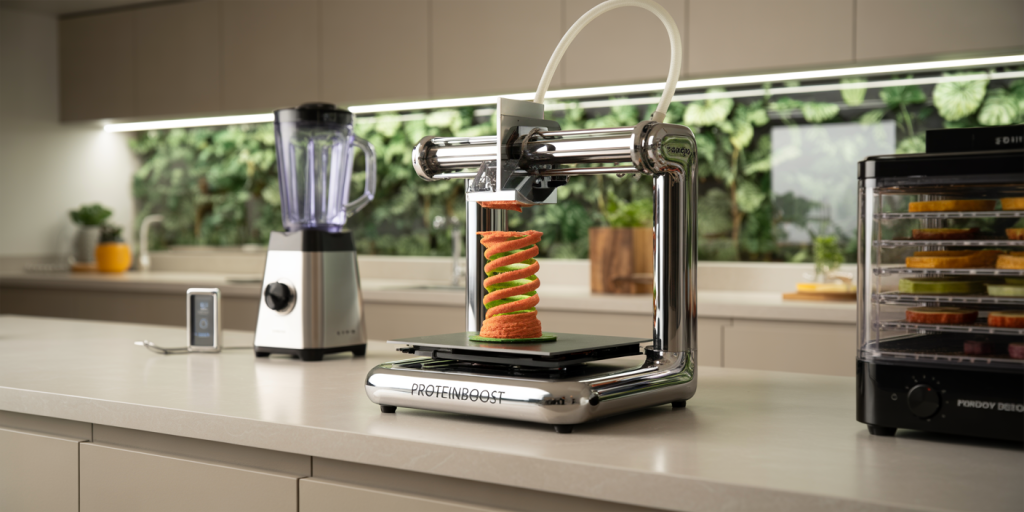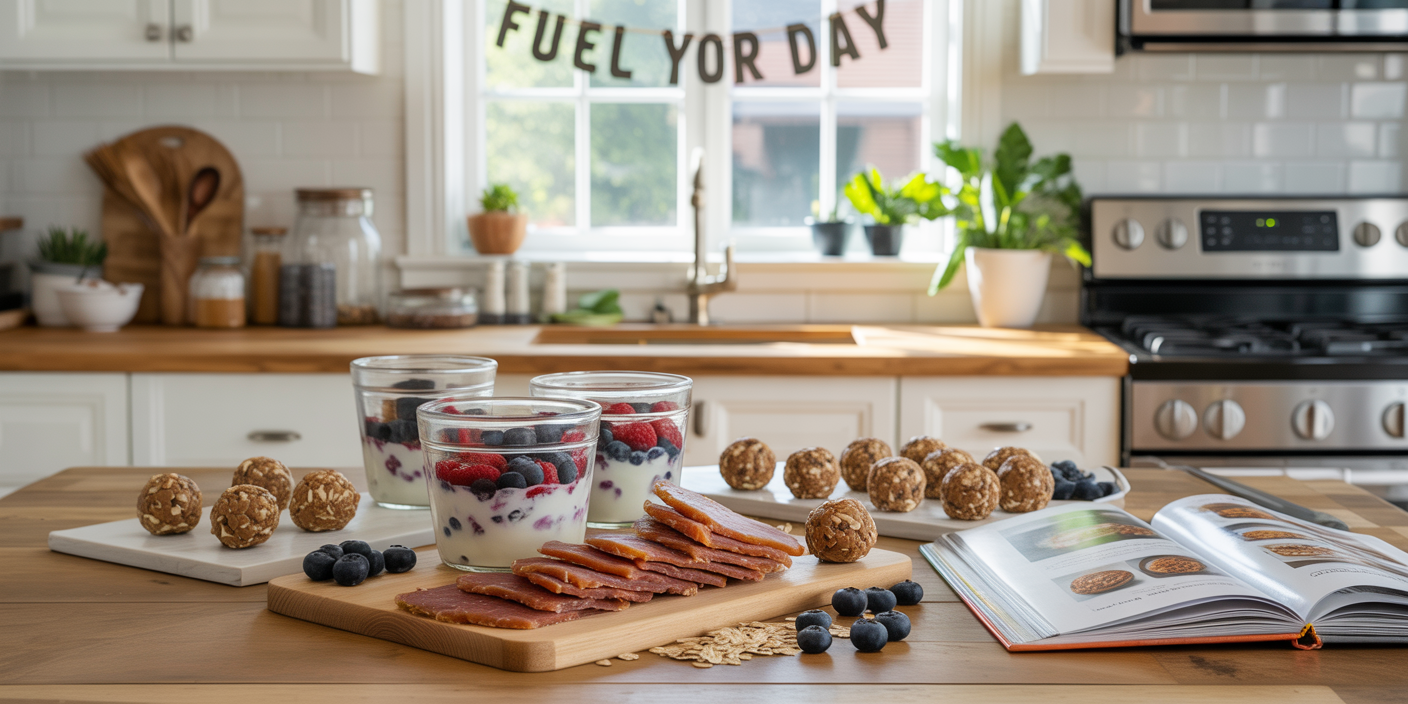In today’s fast-paced world, maintaining a balanced diet rich in essential nutrients is vital, and protein plays a crucial role in that balance. High-protein snacks not only help keep hunger at bay but also promote muscle repair, improve metabolic rate, and support overall health. While many commercially available protein snacks contain additives, preservatives, or excess sugars, homemade high-protein snacks offer a wholesome alternative that you can customize to meet your dietary requirements. This article explores the benefits, practical examples, and nutritional insights behind homemade high-protein snacks for those seeking convenient yet healthy choices.

The Importance of High-Protein Snacks in Daily Nutrition
Protein is a macronutrient essential to building and repairing tissues, producing enzymes and hormones, and maintaining healthy immune function. Consuming adequate protein throughout the day prevents muscle loss, especially during weight management regimes or aging populations. According to the Dietary Guidelines for Americans, an average adult needs roughly 46-56 grams of protein daily, but many fall short due to lifestyle or dietary choices.
Snacking strategically with high-protein options fills nutritional gaps, sustains energy levels, and stabilizes blood sugar. Unlike carbohydrates, protein digests slower, reducing hunger pangs and prolonging satiety. Real-world cases show athletes, busy professionals, and elderly individuals rely on high-protein snacks to complement meals for performance and wellbeing. For example, a 2018 study published in the Journal of Nutrition demonstrated that participants consuming protein-rich snacks throughout the day experienced improved muscle synthesis and better weight management compared to those who did not.
Benefits of Homemade Over Store-Bought High-Protein Snacks
Although store-bought protein bars and shakes appear convenient, many are laden with artificial sweeteners, unhealthy fats, and preservatives. Homemade snacks empower you to control ingredient quality, macronutrient balance, and flavor profiles, ensuring a clean, nutritious product tailored to your health goals and taste preferences.
In practical terms, homemade options also provide economic advantages. Many commercially available protein bars cost between $2 and $4 each, while homemade batches can reduce per-serving costs by over 60%, depending on ingredients used. Furthermore, you can incorporate natural, whole ingredients like nuts, seeds, Greek yogurt, and lean meats, promoting better digestibility and nutrient absorption.

Table 1 below compares typical nutritional metrics and cost aspects of popular store-bought protein bars versus homemade equivalents.
| Snack Type | Calories (per serving) | Protein (grams) | Sugar (grams) | Cost (USD) (per serving) | Additives/Preservatives |
|---|---|---|---|---|---|
| Store-Bought Protein Bar | 220 | 20 | 10 | 2.75 | Yes |
| Homemade Peanut Butter Energy Balls | 180 | 15 | 5 | 1.00 | No |
| Store-Bought Jerky | 150 | 25 | 3 | 3.50 | Sometimes |
| Homemade Turkey Jerky | 130 | 30 | 1 | 1.75 | No |
Source: Nutritional labels and market price surveys (2023)
The data illustrate clear benefits in terms of cost savings and cleaner ingredient profiles when preparing snacks at home.
Popular Homemade High-Protein Snack Recipes with Practical Examples
Preparing effective high-protein snacks does not require complex culinary skills or excessive time investment. Here are some versatile, nutrient-packed recipes designed for different preferences and dietary considerations.
1. Peanut Butter Energy Balls
Energy balls blend the richness of peanut butter with the crunch of oats and the protein boost of protein powder or chia seeds. Use natural peanut butter (no sugar added), rolled oats, honey or maple syrup, chia seeds, and vanilla protein powder.
Example: Mix 1 cup peanut butter, 1/2 cup oats, 2 tablespoons honey, 2 tablespoons chia seeds, and 1 scoop protein powder. Roll into 12 balls and refrigerate. Each ball provides approximately 8 grams of protein and 180 calories.
Busy nutritionist Claire Thompson swears by these for a quick afternoon snack between client appointments, stating, “They satisfy my sweet tooth while keeping my energy steady for hours.”
2. Greek Yogurt and Berry Parfait
Greek yogurt is naturally high in protein and probiotics. Layer it with fresh or frozen berries and nuts to add fiber, antioxidants, and healthy fats.
Example: Combine 1 cup of non-fat Greek yogurt (20g protein) with 1/2 cup mixed berries and 1 tablespoon chopped almonds. Sweeten with a drizzle of honey if needed.
A recent clinical study in the Journal of Appetite (2022) noted that participants consuming yogurt-based snacks reported greater feelings of fullness and reduced late-night snacking.
3. Homemade Turkey Jerky
Jerky is an excellent portable source of lean protein. By using turkey breast cuts and natural seasonings, you can avoid excess nitrates and preservatives common in commercial versions.
Example: Marinate thin slices of turkey breast in soy sauce, garlic powder, and black pepper overnight. Dehydrate in an oven or food dehydrator for 5-6 hours until fully dried. A 1-ounce serving contains roughly 9 grams of protein and minimal carbs.
Fitness coach Aaron Mitchell includes homemade turkey jerky in his training regimen as a post-workout snack to aid muscle recovery: “It’s simple to make, tasty, and satisfies my protein needs without fillers or added sugars.”
4. Cottage Cheese and Veggie Cups
Cottage cheese delivers high-quality protein and calcium. Pairing with crunchy vegetables creates a low-calorie, refreshing snack option ideal for afternoon dips.
Example: Fill small containers with 1/2 cup low-fat cottage cheese (14 g protein) and slices of cucumber, cherry tomatoes, and bell peppers.
Nutritionist Laura Jensen highlights this combo as a “grab-and-go” favorite: “It’s nutrient-dense, supports digestion, and keeps cravings in control.”
Nutritional Considerations and Adjusting for Dietary Needs
When creating homemade protein snacks, it’s important to consider individual dietary constraints such as allergies, intolerances, and specific health goals like weight loss, muscle gain, or metabolic health.
For example, those who are lactose intolerant can substitute dairy-based proteins with plant-based options like pea protein, lentils, or tofu. Vegan athletes may incorporate combinations of nuts, seeds, legumes, and quinoa to meet their protein targets. For people managing diabetes, optimal snack choices minimize added sugars and balance carbohydrates with proteins and fibers to prevent blood sugar spikes.
A comparative overview of protein content in common ingredients used for homemade snacks provides clarity:
| Ingredient | Protein per 100g | Carbohydrates (g) | Fat (g) | Suitable for Allergy Consideration |
|---|---|---|---|---|
| Peanut Butter | 25 | 20 | 50 | Contains nuts (allergen) |
| Greek Yogurt | 10 | 4 | 0-4 | Contains dairy (not suitable for lactose intolerance) |
| Turkey Breast | 29 | 0 | 1 | Generally hypoallergenic |
| Chia Seeds | 17 | 42 | 31 | Hypoallergenic, good for gluten-free diets |
| Almonds | 21 | 22 | 49 | Nut allergen |
Source: USDA Food Database (2023)
Case-by-case adjustments improve snack suitability. For instance, substituting almond butter with sunflower seed butter can circumvent nut allergies without compromising protein content.
Future Perspectives: Innovations in Homemade Protein Snacks
The landscape of homemade high-protein snacks is poised for fascinating evolution as consumer awareness grows and technology advances. Emerging trends include the incorporation of novel plant-based proteins such as insect protein, algae, and lab-grown meat alternatives — all aiming to provide sustainable, nutrient-dense options.
Moreover, smart kitchen appliances like high-powered blenders, food dehydrators, and even 3D food printers will make crafting personalized snacks more accessible and time-efficient. Apps that track nutritional intake and recommend snack recipes based on real-time health data are increasingly popular, enabling consumers to tailor protein intake precisely.

The rise of functional foods is another promising development. Future homemade high-protein snacks could be fortified with probiotics, adaptogens, or bioactive peptides that enhance cognitive function, immunity, or athletic performance. For example, research on collagen peptides suggests benefits for joint and skin health, leading to possible DIY protein bars with added collagen components.
Sustainability considerations will also drive innovation: using local, organic ingredients and minimizing food waste by repurposing leftovers into nutritious snacks align with global environmental goals. This holistic approach to snack preparation combines health, efficiency, and responsibility.
—
Creating homemade high-protein snacks embody more than culinary enjoyment—they represent a proactive commitment to health and well-being. With thoughtful ingredient choices, creativity, and awareness of nutritional needs, anyone can craft satisfying snacks that fuel the body and mind throughout the day. Embracing this trend yields benefits extending from the personal level right through to broader societal impacts on nutrition, economy, and sustainability.

Deixe um comentário